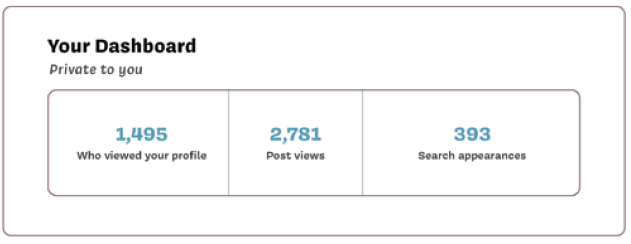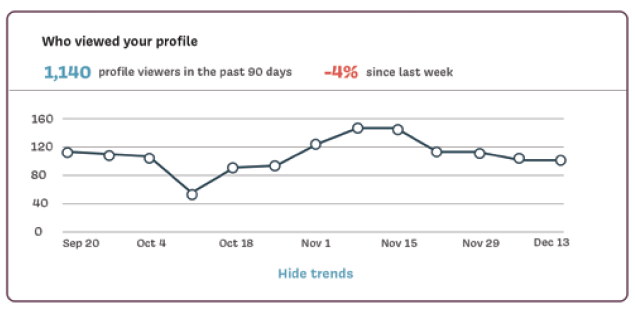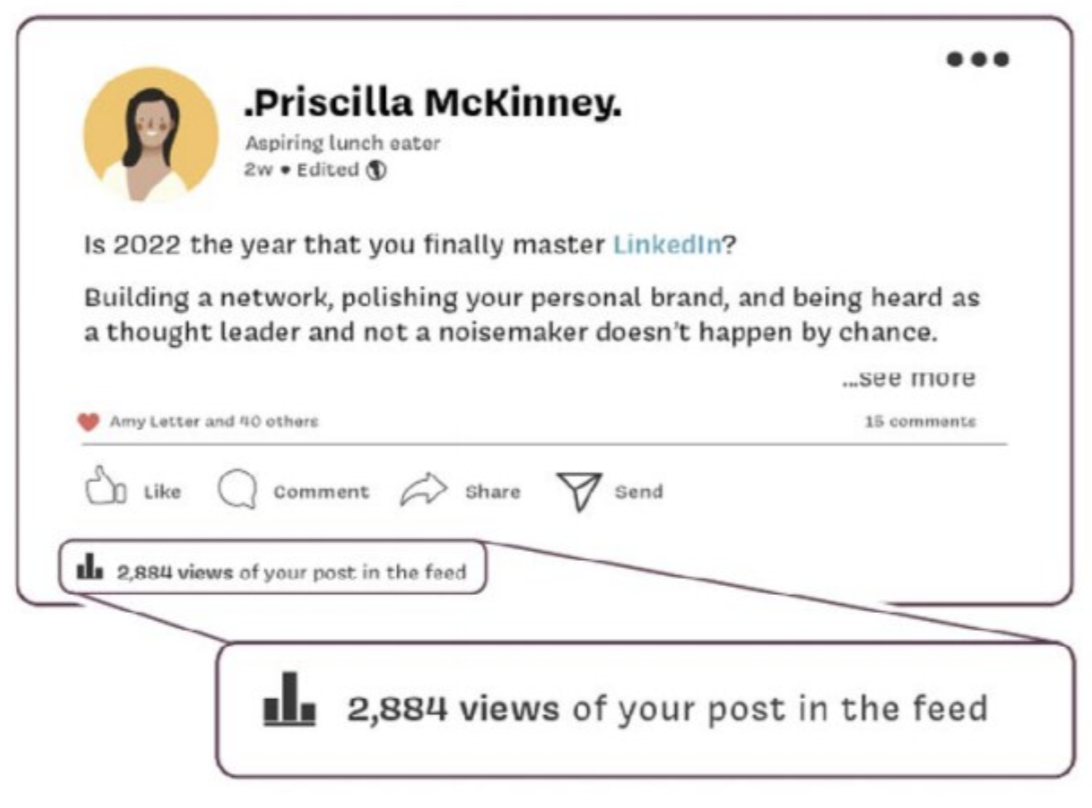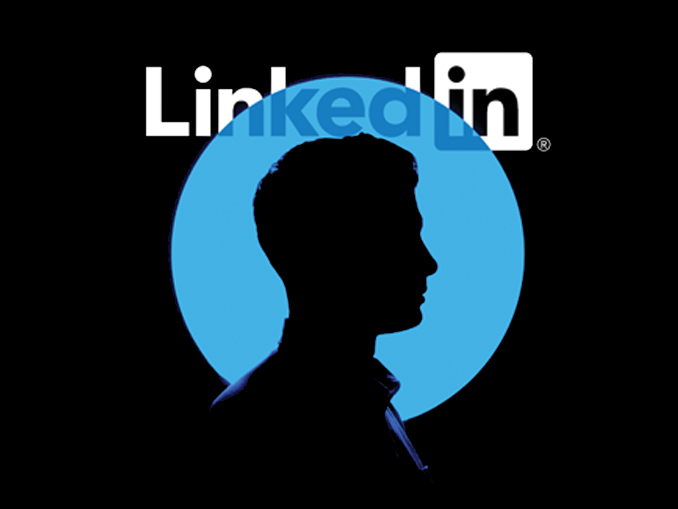by Priscilla McKinney, CEO and Momma Bird, Little Bird Marketing, Joplin, Missouri, priscilla@littlebirdmarketing.com or @LittleBirdMomma
Networking is important, and thanks to technology, it is now even easier. But effectively connecting and using technology for maximum efficiency, productivity, and quality relationship building can be challenging.
With over 700 million users, LinkedIn offers an amazing opportunity to make connections, interact, and share opinions. Yet, many waste precious time on social media. So, how do we make sure the time we spend on LinkedIn is a worthwhile investment? Especially if what you sell involves a longer sales cycle, it can be difficult to gauge whether or not your online efforts are moving the needle, providing brand awareness, or even creating greater visibility for your profile.
To help you become savvier about how to maximize efforts and gauge return on (time) investment with the proper use of analytics, I am sharing a short list of tips and notable LinkedIn metrics. These metrics will help to transform your experience from missed opportunities and unfulfilled potential to successful lead generation, meaningful connections, and exposure for your amazing thought leadership.
First, let me give you some tips about how you can maximize your time on LinkedIn—and then we’ll take a look at the analytics that should start to climb when you start following these seven great tips for LinkedIn success:
- Rewrite Your “About” Section in the First Person
We are humans, connecting with humans. Use your summary to have a conversation with your profile viewers and yourself about why you do what you do and what makes you unique. Let go of salesy jargon and be yourself! Personal stories of your journey and your native genius (what you can’t keep from doing even if you tried) help you stand out from the crowd. And with 700 million people on LinkedIn, this is important!
- Include Industry Keywords in Your Profile
Search engines love keywords. By incorporating them into your profile, you’re increasing your chances of being seen when someone searches a keyword in your industry. I’m not just talking about being found on LinkedIn, but on search engines via LinkedIn. Take a few minutes to identify specific keywords and search terms in your field. A simple Google search provides a wealth of knowledge. Then, review your profile and insert keywords where applicable. The best place for keywords is in your “Experience” section where you can enumerate your skills and past projects.
- Ask for a Strategic Recommendation
Strategic recommendations are more powerful than endorsements because someone takes time to speak of your awesomeness based on their personal experience, not their hunch about you. When asking for a recommendation, do not send a generic LinkedIn message. Instead, remind your contact what you did while working with them. This will jog their memory and steer them in the right direction. The last thing people need is another job to do. Instead, make a short one-sentence suggestion about what they could talk about, and you’ll find people are happy to give you a nice recommendation. It’s magic!
- Post Every Day
To move forward on your journey to thought leadership, you need to post every day. “I don’t have time to post every day.” Well then, I don’t know how you’re going to move your brand forward. Simply put—you have to make time to post every day. It doesn’t take more than 15 minutes. If you want to be strategic about it, schedule your posts ahead of time through a free or very inexpensive system like Buffer or Hootsuite. One great way to not fall into the black hole of social media is to set a timer. It’s easy, “Siri, set a timer for 15 minutes.”
- Be Authentic
Avoid talking about the features and benefits of your product or service. Make sure your posts are not always direct sales. Nobody likes being sold to, and it doesn’t allow space for you to truly connect with people. Instead, work on developing your personal brand. Post relevant and curated content from trusted sources or even work up to publishing original articles to build your personal and professional brand. Write things people can look forward to!
- Follow and Use Hashtags
Search for and follow hashtags effectively. You can find hashtags to follow by looking at colleagues’ or industry thought leaders’ posts. A good rule of thumb is not to use more than three hashtags per post and only use them at the end. Be careful of the “double search.” If you use the word marketing in your post, you don’t need to use #marketing—that is a double search.
You can use hashtags to optimize your post for maximum visibility by checking how many followers a hashtag has. It only takes a simple search. For example, you could choose #marketingadvice—but why would you, when that hashtag has barely over 600 followers? The hashtag #marketing has over 20 million followers. Use the tags that get you better exposure.
- Always Be Helping
Aside from focus and strategy, the number one thing you can do to grow your online social presence is to meaningfully connect with others. The best way to do that is to find ways to proactively help them. Support others by engaging with their content via the news feed or visiting their profile. It takes five minutes to offer a few words of encouragement, congratulate someone on an accomplishment or share an experience. Not only will you start to see your profile views go up, you just might make someone’s day. Look for ways to help personally and professionally, and you’ll soon find yourself with meaningful connections and involved in productive conversations.
How Analytics Help Drive Value
LinkedIn has, in my humble opinion, one of the worst dashboards in social media history. But, if you understand it, it really does provide useful statistics to help you measure your ongoing progress. This dashboard is private to you—no one else taking a peek at your profile can see this information. Your dashboard can easily be spotted near the top of your profile page. On this dashboard, you will find three main areas to track and focus on: profile views, post views, and search appearances. Statisticians everywhere break out in hives when I explain the first number is based on 90 days, the second is a representation of only your last post, and the third is a trailing past week (seven days). Do not ask why. This is the way (see the illustration).
 Profile Views
Profile Views
This number reflects the total number of LinkedIn users who viewed your profile over the last 90 days. If you subscribe to LinkedIn Premium (whether it’s Career, Business, or Sales Navigator), you’ll be able to see a list of everyone who visited your profile unless they’ve activated Incognito Mode. Without Premium, you’ll only see the last one or two people with names. LinkedIn Premium also allows you to see the “trends” over the past 90 days.
Let me note, you do not need Premium to improve your networking and social selling abilities. I like the approach of doing all you can on the free account before making that decision to invest further. But if you do have access to this graph on Premium—use it! It’s like they are knocking on your door. It’s only polite to answer it.
 Take a look at the past three months and note each curve, up or down. Here you can extract some valuable insight into the quality of your content. If your percentage takes a dip after a period of inactivity, that’s expected. If the curve skyrockets, then revisit the posts from that day. You are getting great exposure, so consider putting out similar content. This stat should have a natural ebb and flow, as we’re human and some content we post is more interesting than others. Knowing where you started the year with this data and what you are experiencing now can help you understand if people are finding your posts valuable enough to actually review your profile.
Take a look at the past three months and note each curve, up or down. Here you can extract some valuable insight into the quality of your content. If your percentage takes a dip after a period of inactivity, that’s expected. If the curve skyrockets, then revisit the posts from that day. You are getting great exposure, so consider putting out similar content. This stat should have a natural ebb and flow, as we’re human and some content we post is more interesting than others. Knowing where you started the year with this data and what you are experiencing now can help you understand if people are finding your posts valuable enough to actually review your profile.
Post Views
This figure only represents the views for your most recent post at this moment in time. If you’re interested to see how certain posts performed (which you should be), there is a simple way to get these insights. Navigate to the post you wish to view the stats. For example:
 After clicking on the number of views below the post, you will get a pop-up window with more details, showing you the top companies whose employees viewed your post, a top list of job titles, and the top geographical locations of your post viewers.
After clicking on the number of views below the post, you will get a pop-up window with more details, showing you the top companies whose employees viewed your post, a top list of job titles, and the top geographical locations of your post viewers.
- Top Companies
This analytic will tell you where your post viewers work. If the top company of your post viewers is consistent through several posts, that might indicate that the company is getting to know you, and you’re in the critical phase of the purchase cycle. Keep building trust and being helpful. You’re halfway there!
- Top list of job titles
This is a good indication of how well you cater to your target audience. If the titles here match the niche you’re looking for, then you’re doing great.
- Top geographical locations
This analytic tool will give us insights into where people are viewing your post from.
Wish List
A statistic I like even more, and I wish LinkedIn were listening to me right now, would be an average of views for your last ten posts. Even better, I’d like to see that on a weekly or monthly basis. I don’t need to get too crazy. It’s not all about getting the most views. Again, there should be a natural ebb and flow. But you should use this to understand what your audience likes best and if you are making progress honing in on better messaging that is relevant enough for your post to be pushed through to the feeds of connections of connections.
Gaining views from those who already follow you is important, but there is more. The exponential magic of LinkedIn is found when what you post is of so much value to your followers that LinkedIn starts serving your content up to their followers, which are second or third connections to you. This opportunity for exposure strikes at the core of LinkedIn’s very own mission which is to “connect talent to opportunity at scale.” It would take you many lifetimes to reach the exponential numbers of reach LinkedIn offers as a course of daily business.
Search Appearances
Search appearances are a weekly statistic (on your profile page, not your news feed) reflecting the number of times your profile appeared in LinkedIn searches. This number will largely depend on your tagline, as well as your “About” and “Experience” sections. If you have an excellent keyword-rich write-up in your “About” section that speaks to the audience you’re targeting, you’ll get to see more search appearances. This is really about successfully using keywords or searchable phrases you want to be found for and placing them in your profile. By clicking on this metric, you’ll find more insights into the titles and companies your searchers work for. Consider keeping your “About” section more personal and using bullet points to make your “Experience” section more scannable. The number of search appearances is a measure of your findability on LinkedIn. As the adage goes, “Unseen is unsold.”
Why Analytics Matter
As you optimize and tailor your profile with keywords and proper (even fun) information, you’ll begin to create meaningful connections, and those connections will open the door to a whole new world. Not only will you notice an increase in post engagement and profile visibility, eventually establishing you as a thought leader in your area of expertise, but you will also find the best way to generate leads sustainably is not by selling to your connections, but by selling through your connections. Missed opportunities will be a thing of the past.

